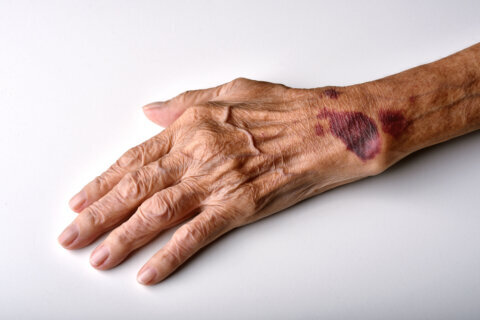This content is sponsored by MedStar Washington Hospital Center.
Coronavirus has led many people to shelter in place and leave their homes only for the most essential tasks. This has made visits to the doctor or hospital a challenge, and the medical community has had to adapt to meet patients’ needs while considering their health and safety.
MedStar Washington Hospital Center is using video visits to give patients convenient access and increase efficiency across its facilities, along with the rest of the MedStar Health system. Seeing a doctor can be as easy as the click of a button – all it takes is a smartphone, tablet, or computer equipped with a camera and cellular or Internet access, said Dr. Ethan Booker, medical director of the MedStar Telehealth Innovation Center & MedStar eVisit.
“The great connector here is video technology. Even without the aspect of physical touch, an experienced healthcare provider can learn a great deal from a video session alone,” Dr. Booker said.
Through telehealth, physicians can see a patient’s symptoms and work to make a diagnosis. Meanwhile, the patient doesn’t have to leave their home and their family can remain involved in the appointment. Video discussions also help doctors evaluate the home environment to determine if it’s safe and the patient has necessary supplies. The patient can even point the camera at their medicine vials so physicians can accurately record prescription medications and dosages, Dr. Booker said.
“We ask all the right questions to help gauge symptoms and narrow down potential causes,” Dr. Booker said. “And we can tell very quickly if the patient needs in-person attention—and, if so, help with necessary arrangements.”
Confidentiality rules and regulations still remain in effect at this unprecedented time. MedStar Washington Hospital Center uses its own highly secure system to make sure patients’ information stays confidential, Dr. Booker said.
There have been great strides in telehealth in the last few months. Hospitals such as MedStar Washington Hospital Center were moving toward improved telehealth offerings, but coronavirus drove that change quickly, Dr. Booker said.
In the first three weeks of stay-at-home recommendations, MedStar Health logged 24,000 video visits, peaking around 3,000 a day. Those thousands of patients previously might have required a visit to a medical facility, but instead were able to connect with a doctor from home, Dr. Booker said.
“The impact in limiting exposure cannot be overstated and will play a significant role in flattening the curve of infection and easing the burden on the healthcare system,” Dr. Booker said.
There are other positives to the telehealth trend: in-person visits are streamlined. Patients may also be discharged sooner to avoid unnecessary contact with healthcare workers or other patients.
Also, telehealth allows healthcare providers who test positive for COVID-19 to continue to help treat patients remotely even as they self-isolate.
This global pandemic has altered healthcare delivery significantly and permanently, Dr. Booker said.
“I do not see us going back to the way things were, once social distancing and isolation orders are lifted,” he said. “Interactive capability is limiting travel, wait times and infection exposure. Now that so many have experienced its benefits, telehealth will likely remain a prominent mode of delivering patient care.”
Telehealth has come a long way recently and, in the future, patients will want easier, quicker and less structured access to their doctors, Dr. Booker said. Doctors themselves will want access to their peers and the data they need to provide their best care. Hospitals will have to be open to new ways to connect and thoughtful about what works best for doctors and patients, he added.
“With the right mix of interactive tools, we can deliver efficient, cost effective care at the highest quality for the patient,” Dr. Booker said. “It is an exciting time to be part of it.”
Read more about telehealth options offered throughout MedStar Health in Dr. Booker’s blog post.







